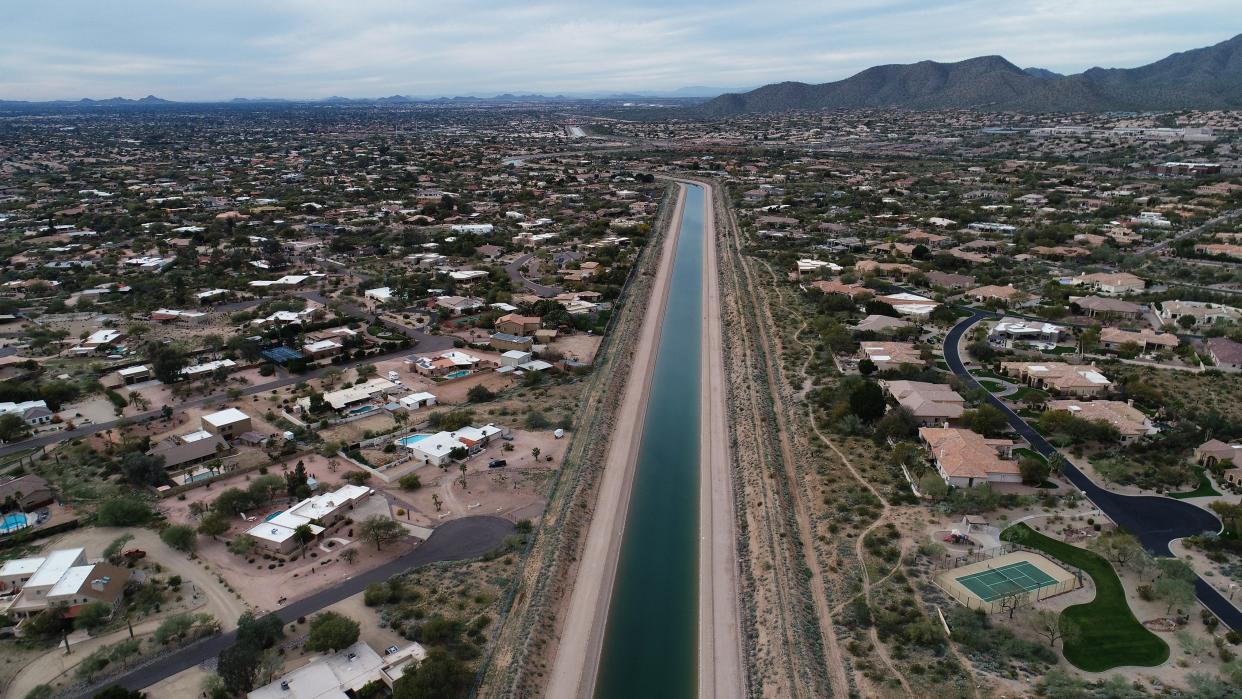If you care about Arizona's dwindling water supply, don't overlook the CAWCD race

It’s near the bottom of the ballot.
And with 14 candidates running for five seats, it might be tempting to cast votes at random.
Please don’t.
The Central Arizona Water Conservation District (CAWCD) might be the most important race you’ve never heard of, but it directly affects your life. Especially now, given the mounting water crisis on the Colorado River.
The board oversees the 336-mile Central Arizona Project that delivers Colorado River to central Arizona, as well as a groundwater replenishment district. It touches the lives of some 5 million people – about 80% of the state’s population.
Yet the water its canals deliver is under considerable threat as storage in Lake Mead rapidly dwindles. The financial, maintenance and water delivery challenges the next board will face are immense.
That’s why making informed choices in this race is so important.
What am I voting for?
CAWCD board members serve six-year terms. Five of the 10 seats that represent Maricopa County are up for election in 2022.
But only two incumbents are running again. The other three board members – Jennifer Brown, Jim Holway and Mark Lewis – will leave at the end of the year.
Where do they stand? CAWCD candidates answer water policy questions
That means newcomers will fill at least three of the five seats.
Who are the 14 candidates?
Let’s start with the incumbents, both of which have done fine work on the board:
Alexandra Arboleda, the board’s secretary, may be one of its hardest-working members. She is full of ideas and eagerly tackles stuff that might sound mind-numbing but will come in handy as conflicts for dwindling supplies arise, such as clarifying the board’s water acquisition policies.
Ben Graff helped lead a customer service task force. He’s also the board’s go-to guy for speaking with clubs and other groups about what CAWCD does and why it’s important.
As for the newcomers, it might help to break them into four groups:
The Republican slate
Donovan Neese is superintendent of the Roosevelt Irrigation District and vice president of the Agribusiness & Water Council of Arizona. His day job is water.
He is running as a team with water newcomers Jason Lundgren, a chiropractor; Amanda Monize, who works in education; and Barbara Seago, a software engineer. You may have seen their campaign signs, which play up their affiliation as Republicans.
The team is tied to outgoing incumbent Mark Lewis, who typically recruits CAWCD candidates who might appeal to conservative voters. Like Lewis, they tout lowering taxes and rates as a priority.
Real estate and development
None of the rest of the candidates are running as a slate. But three have spent years in the housing and development community:
Lisa Bullington is a real estate attorney who has worked to obtain water for new developments. She told The Arizona Republic that one of CAWCD’s most important roles is to promote “smart, responsible growth.”
Shelby Duplessis is a civil engineer who works in land development. She pledges to work closely with stakeholders to “help determine and implement the best water management practices and conservation solutions.”
Cory Mishkin owns a real estate firm. He prioritizes the board’s duty to “ensure sound tax policy,” including repaying the federal government for the cost of constructing the canal.
Municipal water providers
Two candidates have decades of experience providing water to cities:
Alan Dulaney retired in 2019 as Peoria’s water policy administrator and narrowly lost a bid to join the board in 2018. He warns that we have “reached a tipping point” that will require tough choices from the board.
Karen Peters oversees water conservation and planning efforts as a deputy city manager for the city of Phoenix. She also notes the tough decisions before the board, saying “the next several years are going to make or break us.”
Interested citizens
The remaining three are:
Ylenia Aguilar is an Osborn school board member. She works for a water technology company and counts climate change as a major challenge for the board.
Jim Pederson is a businessman and former chair of the Arizona Democratic Party. He says CAWCD’s most important task is to “protect Arizona’s interest in the Colorado River.”
Daniel Cirignani Wood touts his experience in supply chain management. He was inspired to run during the pandemic after learning more about the drought.
What does this all mean?
Whoever wins in November is going to face a lot – and quickly. Water deliveries could be radically pared back next year, depending on how 2 to 4 million acre-feet in cuts shake out along the Colorado River.
The board needs members who already know the players, politics and quirks in Arizona water law. There simply won’t be time to learn this stuff.
In addition to the incumbents, Dulaney and Peters deeply understand water policy and are good at explaining it simply. Their municipal perspective also could be helpful, given that cities and tribes are in line for most of the water that remains.
Neese has strong experience and would be a voice for the few farmers that still receive Colorado River water.
But the partisan overtones in his slate’s campaign are troubling. Because even if water is political, it has long been nonpartisan. There’s a reason these seats are nonpartisan.
Bullington and Duplessis also have deep water knowledge and perspectives on conservation and responsible growth.
It’s up to you to choose our next water leaders. Make an informed choice.
This is an opinion of The Arizona Republic's editorial board.
This article originally appeared on Arizona Republic: CAWCD: What to know about 14 candidates running for CAP board in 2022

